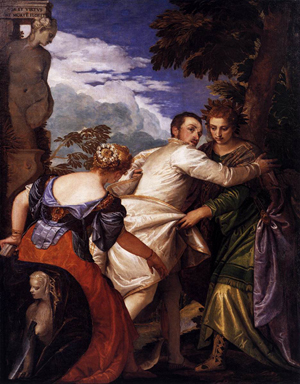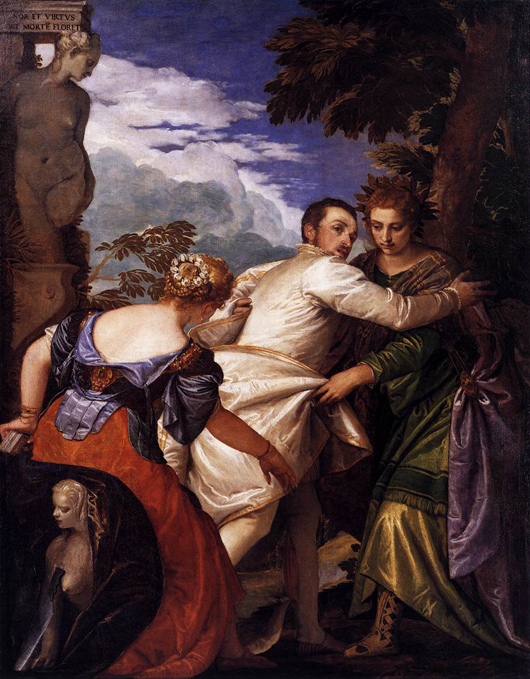
More than 70 of his works are on display at the John and Mable Ringling Museum of Art in Sarasota. The special exhibit – all curated from North American museums – opened Dec. 7 and runs through April 14.
Veronese, who was 60 when he died in 1588, is of special significance to the museum. His 1572 painting Rest on the Flight into Egypt was the first work of art collected by circus magnate John Ringling – who would later acquire a large collection of Baroque art and Peter Paul Rubens paintings.
That painting is part of the Ringling’s exhibit, which expands throughout three large rooms of the museum.
“He’s basically the most elegant painter of 16th century Venice,” said Virginia Brilliant, Ringling Museum’s curator of European art. “Veronese never goes out of style.”
Brilliant says most of the world’s Veronese paintings are concentrated in European museums, while many collections in Canada and the U.S. have one painting each – so the Ringling’s special exhibit is comprised of those loaned works.
Writer Henry James once asserted that Veronese was “the happiest of painters,” Brilliant said.
And that’s a pretty fair assessment from the Ringling’s exhibit. Veronese captured the wealth of the era and the good life. In Veronese’s paintings, chubby-cheeked noblemen and angelic ladies are clad in silk and velvet, detailed in colors so nuanced that they look real. Entire families show off their assets in these paintings, with dogs, children and weaponry on display.
“Venetian art is all about color and brushwork and light,” said Brilliant. “Looking at them in person, they have a kind of a power you just can’t replicate by looking at a photo.”
Veronese didn’t just chronicle the rich. He also created stunning religious masterpieces. The Ringling tried to hang some of these works – which were once on altars and chapels – in similar, heaven-pointing ways so visitors can gaze upwards and feel like they are in an Italian chapel.
One of the exhibit’s most beautiful paintings is The Dead Christ With Angels, a fragment of an altarpiece. Loaned to the Ringling from the National Gallery of Canada in Ottawa, it shows Christ on a cloud, surrounded by three large angels in flowing, vibrantly-hued robes – and several cherubic, angel babies.
The Ringling also tries to provide context for the details within Veronese’s paintings. Visitors can gaze at the painting of Venus at her Toilette and marvel at the brushwork involved in painting the lace pillow – then inspect an actual piece lace towel from the same era.
“The fact that it survived at all is amazing,” Brilliant said, of the cloth. “Imagine if one of your sheets made it 500 years.”
Because the exhibit shows Veronese’s works that were done throughout his lifetime, viewers can sense how he evolved as an artist. Sketches, etchings and engravings are also included in the exhibit.
The works are on loan from some of the nation’s largest museums including the National Gallery of Art in Washington; the Cleveland Museum of Art; the J. Paul Getty Museum; the Museum of Fine Arts in Boston.
___
If You Go…
JOHN AND MABLE RINGLING MUSEUM OF ART: 5401 Bay Shore Road, Sarasota, Fla.; http://www.ringling.org or 941-359-5700. Open daily 10 a.m.-5 p.m. and Thursdays until 8 p.m. “Paolo Veronese: A Master and His Workshop in Renaissance Venice” is on display until April 14, 2013. Adults, $25, children 6-17, $5.
Copyright 2012 Associated Press. All rights reserved. This material may not be published, broadcast, rewritten, or redistributed.
AP-WF-12-14-12 1645GMT
ADDITIONAL IMAGE OF NOTE



